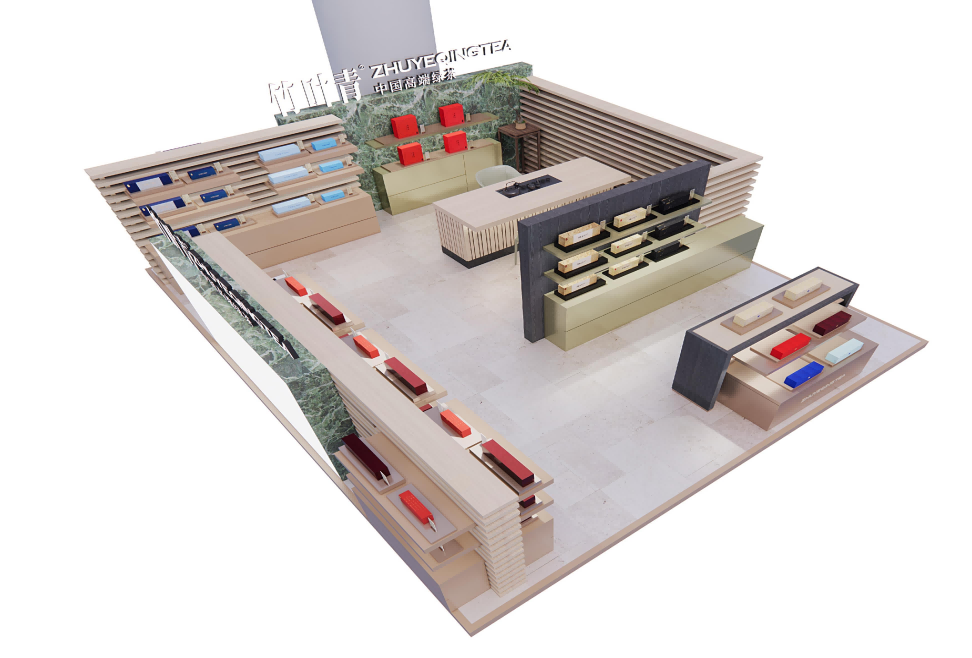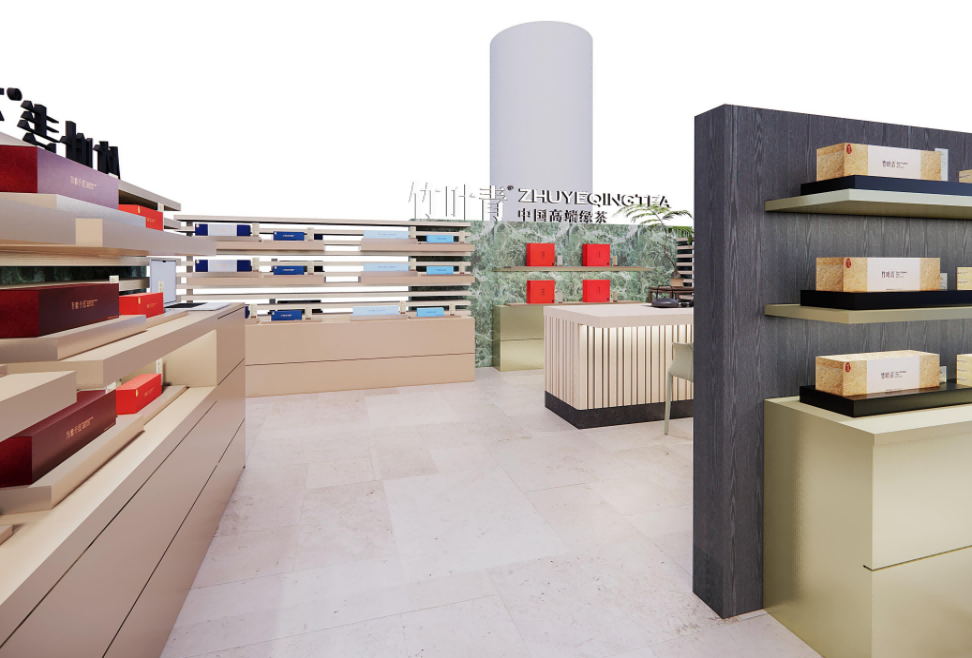The Role of Display Stands in Real-Time Merchandising
Enabling Quick Swaps for Trending or Seasonal Items
Display stands are essential for rapid changes in in-store displays, allowing retailers to swiftly adapt to emerging trends. Such flexibility ensures that stores remain relevant and appealing to consumers as new trends evolve. For example, many clothing retailers have successfully implemented quick-swap displays to highlight seasonal collections, which reportedly can increase sales by up to 30% during peak seasons. The ease of changing displays quickly keeps the store environment fresh and exciting for shoppers. An agile approach to merchandising has been emphasized by experts as crucial for capturing consumer interest in these fast-changing times.
Highlighting Bestsellers and Promotional Stock Instantly
Strategically positioned display stands can significantly enhance the visibility of bestsellers and promotional items, driving sales performance. According to industry data, there is a strong correlation between product visibility on displays and increased sales, as customers are more likely to purchase items that catch their eye. Experts in marketing stress the importance of strategic product placement, noting that up to 60% of purchases can be attributed to impulse buying when products are prominently displayed. Additionally, using color psychology and engaging design can make promotional displays more enticing, encouraging customers to explore and purchase.
Data-Driven Product Placements Based on Foot Traffic Analytics
Retailers are increasingly using foot traffic analytics to optimize product placement on display stands, enhancing customer engagement and boosting sales. By analyzing patterns through methods like heat mapping and visitor counts, stores can determine high-traffic areas to strategically position key products. For instance, some retailers have seen a 15% increase in sales after employing data-driven insights to reorganize their product displays. Technologies like these help anticipate consumer behavior and adapt merchandising strategies accordingly, leading to a more personalized shopping experience and improved sales outcomes.
Optimizing Product Visibility with Strategic Display Stand Placement
Positioning in High-Traffic Zones for Maximum Exposure
Selecting high-traffic zones within a store for display stands is crucial for maximizing product exposure. Strategic placement near entrances, checkout areas, or action alleys allows displays to potentially attract customers as soon as they enter the store. Data indicates that products positioned in optimal locations can substantially increase customer reach and engagement. Studies have shown a direct correlation between effective placement and higher sales volumes. To identify these zones, retailers should observe store traffic patterns and engage with merchandising experts to optimize product visibility and enhance consumer interaction.
Aligning Displays with Customer Flow Patterns
Understanding customer flow patterns within a store is essential for informed display stand arrangements. By aligning displays with natural customer pathways, retailers can facilitate an intuitive shopping experience, drawing shoppers toward desired products effortlessly. Case studies have demonstrated that well-designed layouts, which predict shopper movements, can elevate sales and customer satisfaction. Retailers are encouraged to track and analyze movement trends using tools like heat mapping and adjust displays based on emerging data from customer behavior. This adaptability ensures that product placements remain relevant, visually appealing, and aligned with consumer needs, ultimately driving purchase decisions.
Leveraging Technology for Agile Retail Displays
Integrating Digital Signage for Dynamic Content Updates
Integrating digital signage with display stands can revolutionize the retail space by delivering real-time, dynamic content. By continuously updating product information and promotions, digital signage keeps the sales floor fresh and engaging. Retailers like Target and Best Buy have implemented digital displays to instantly adjust content, which has proven to enhance customer engagement significantly. The primary advantage of digital signage is the ability to provide real-time updates on promotions and inventory levels, ensuring that the latest offers are always visible to customers. As an expert in retail technology, John Davis states, "Digital signage is not just a trend; it's a foundational element of modern retail experiences, allowing stores to rapidly adapt to consumer demands."
IoT-Enabled Inventory Tracking and Real-Time Adjustments
Utilizing IoT technology for inventory tracking offers a cutting-edge approach to managing display stands effectively. IoT sensors can monitor stock levels in real-time, allowing retailers to make immediate adjustments to displays based on accurate data. A study by Business Insider suggests that IoT implementations can improve inventory management efficiency by as much as 30%. Being responsive to inventory data means that popular items are never out of stock on the display, and slow-movers can be promoted differently to stimulate sales. However, the adoption of IoT technology does come with challenges such as high implementation costs and the need for robust cybersecurity measures to protect sensitive data. Nonetheless, the benefits of improved efficiency make IoT a valuable tool for modern retailers seeking to optimize their display stand strategies.
Encouraging Customer Engagement Through Interactive Display Solutions
Tactile Displays for Hands-On Product Exploration
Tactile displays have revolutionized the shopping experience by allowing consumers to physically interact with products. For instance, in the cosmetics industry, tactile displays invite customers to sample lotions or makeup, significantly enhancing the decision-making process by engaging multiple senses. Similarly, the electronics sector often features interactive zones where users can explore gadget functionalities before purchasing. These hands-on interactions are linked with higher purchase intent as they address a customer's curiosity and build confidence in the product. As consumer psychologist Paco Underhill explained, "Touching a product increases a shopper’s sense of ownership, making them more likely to buy." This tangible engagement underscores the power of tactile displays as a key driver in the retail environment.
Social Media Integration with In-Store Merchandising
The integration of social media into in-store merchandising can significantly enhance customer interaction with display stands. Platforms like Instagram and Facebook provide avenues to share shopping experiences, bolstering brand visibility. A notable example is Sephora's Beauty Board campaign, which encouraged users to share photos of their store experiences online. This not only increased foot traffic but also boosted sales by 16% within stores involved in the campaign. Moreover, tools like interactive kiosks that link directly to social media accounts facilitate these engagements, making product recommendations and reviews instantly accessible. As a result, retailers embracing these digital tools find it easier to engage shoppers, translating online presence into in-store visits and purchases.

Case Studies: Success Stories in Dynamic Merchandising
Fashion Retailers Using Modular Display Stands for Seasonal Agility
Fashion retailers have found significant success by integrating modular display stands, allowing them to swiftly adapt to seasonal changes. For instance, several prominent fashion brands have reported increased sales by updating their store layouts with modular systems. This flexibility enables a creative blend of design, without sacrificing efficiency. According to a fashion industry report, retailers that use modular display stands experienced a 15% increase in sales during seasonal promotions. Retailers have noted that these stands not only streamline operations but also enhance the aesthetic appeal of their stores, thus captivating customers and driving purchasing decisions.
Store managers have shared insightful testimonials on their positive experiences with modular display systems. The general consensus is that these systems grant unprecedented freedom in store design while ensuring an efficient approach to merchandising. One manager noted, "The ability to easily reconfigure displays has allowed us to keep our visuals fresh and appealing, which is crucial during high-traffic seasons." Such testimonials highlight the added advantage of maintaining visual intrigue in a competitive retail environment. Modular display stands ultimately serve as an essential tool for any fashion retailer aiming to stay ahead in the dynamic world of retail merchandising, showcasing both products and creativity seamlessly.
Electronics Brands Leveraging Heatmaps for Product Placements
Electronics retailers are harnessing the power of heatmap analytics to fine-tune their product placements on display stands. By analyzing customer movement patterns within a store, brands can strategically position their high-interest items in areas of high consumer traffic. For example, a leading electronics retailer reported a 20% increase in product interaction and subsequent sales after employing heatmap technology to optimize their display placements. This approach allows retailers to scientifically determine the best spots for deploying interactive product displays, thereby enhancing customer engagement and boosting conversions.
Heatmapping technology works by tracking and analyzing foot traffic data, providing valuable insights into customer behaviors and preferences. Electronics retailers have capitalized on these insights to create display strategies that align with consumer habits. Insights from brand managers suggest that data-driven placements lead to more informed merchandising decisions. One brand manager remarked, "By leveraging heatmap analytics, we have transformed our display strategies from intuition-based to data-driven, ensuring that our displays deliver maximum impact." This systematic methodology reinforces the effectiveness of using advanced analytics to elevate the overall shopping experience, resulting in greater sales efficiency for electronics brands.
FAQ
Why are display stands important in merchandising? Display stands are crucial for rapidly adapting to new trends and showcasing bestsellers effectively, which can enhance customer engagement and drive sales.
How can foot traffic analytics benefit display stand placement? By using foot traffic analytics, retailers can strategically position displays in high-traffic areas, improving product visibility and potentially increasing sales by understanding and anticipating customer behavior.
What advantages do digital signage and IoT technology provide in retail displays? Digital signage offers dynamic content updates and real-time promotions, while IoT technology enables accurate inventory tracking and efficient product placement, enhancing the customer shopping experience.
How do tactile displays and social media integration enhance customer engagement? Tactile displays allow hands-on product exploration, increasing purchase intent, while social media integration boosts brand visibility and customer interaction through shared shopping experiences.
What strategies do successful retailers use with modular display stands? Retailers use modular display stands to adapt quickly to seasonal changes, maintain fresh store visuals, and enhance the aesthetic appeal, leading to increased sales and improved customer satisfaction.




